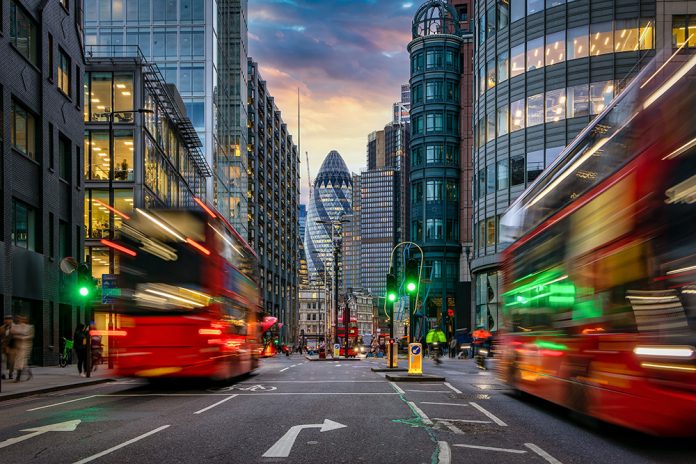Narrow city centre streets flanked by tall buildings may be trapping pollution, leading to poor air quality..
Research by Nottingham Trent University (NTU) shows that streets narrower than 20m experience irregular and often dangerously high spikes in particulate matter (PM).
“There’s a temptation to think of ULEZ and electric vehicles as silver bullets,” said NTU researcher Nikhil Ravindra.
“But our data shows that volume of traffic, road layout, building height, and wind direction all play a role in air quality. A greener & smarter approach is urgently needed.”
The university’s survey in London analysed PM10 and PM2.5, which are known to cause respiratory and cardiovascular diseases and are classified as carcinogenic by the World Health Organisation (WHO).
Researchers – who conducted a walking survey from Finsbury Square to Undershaft Street – found the highest pollution spikes in narrow corridors like Wilson Street (14m wide) and Eldon Street (13m), where PM10 levels peaked above the WHO’s recommended daily thresholds.
The surrounding tall buildings were believed to inhibit air circulation, creating ‘urban canyons’ where emissions from vehicles and local activities accumulate with little dispersion.
In contrast, wider streets like Bishopsgate recorded more stable and lower pollution levels.
Nikhil added: “The value of artificial intelligence also has a part to play in managing electric vehicle charging and traffic flow, as AI-enabled systems could reduce carbon emissions by up to 40 per cent annually per vehicle.”
The study –recently presented at the Nordic Energy Informatics Academy Conference 2025 conference in Sweden – suggests that improving airflow on roads allows pollutants to dissipate more effectively, helped by more consistent traffic flow and fewer idling vehicles.
“London’s iconic streets may be beautiful, but invisible smog traps which prevent pollution from dispersing may be silently harming public health,” said Professor Amin Al-Habaibeh, a professor of intelligent engineering systems, who oversaw the study.
“Our findings show a clear link between narrow roads, tall buildings, and air quality spikes—especially for pedestrians and cyclists who are the most exposed.”
The study also found that streets which are at a 45-degree angle to the wind are least likely to be ventilated naturally by gusts of wind, creating further pollution traps.
The findings come amid concern about urban air quality in the UK. A 2025 report by Friends of the Earth found 95% of neighbourhoods in England and Wales have harmful air pollution levels. Another report by Friends of the Earth in 2022 showed that 127 neighbourhoods in London had twice the recommended level of both NO2 and PM2.5.
While the researchers say measures like the Ultra Low Emission Zone (ULEZ) and the Congestion Charge Zone have contributed to improvements, the study highlights the need for more targeted interventions.
Recommendations include:
Vertical green walls and tree planting in streets to capture particulates
An expansion of AI-driven traffic management to smooth traffic flow and reduce idling
The promotion of active travel (walking, cycling, micro-mobility) with green mobility corridors
Stricter controls on wood-burning stoves and non-electric vehicles in high-risk zones




